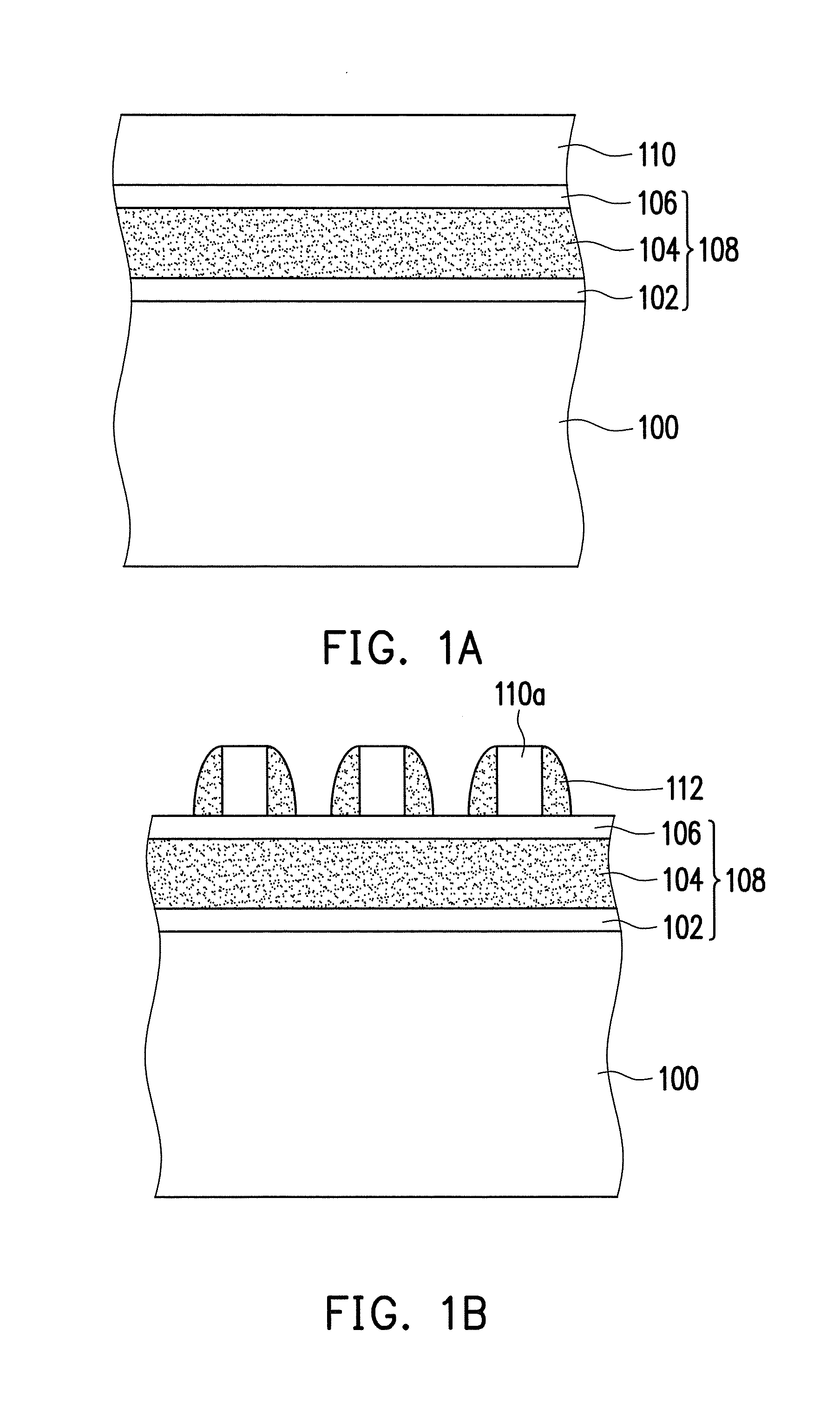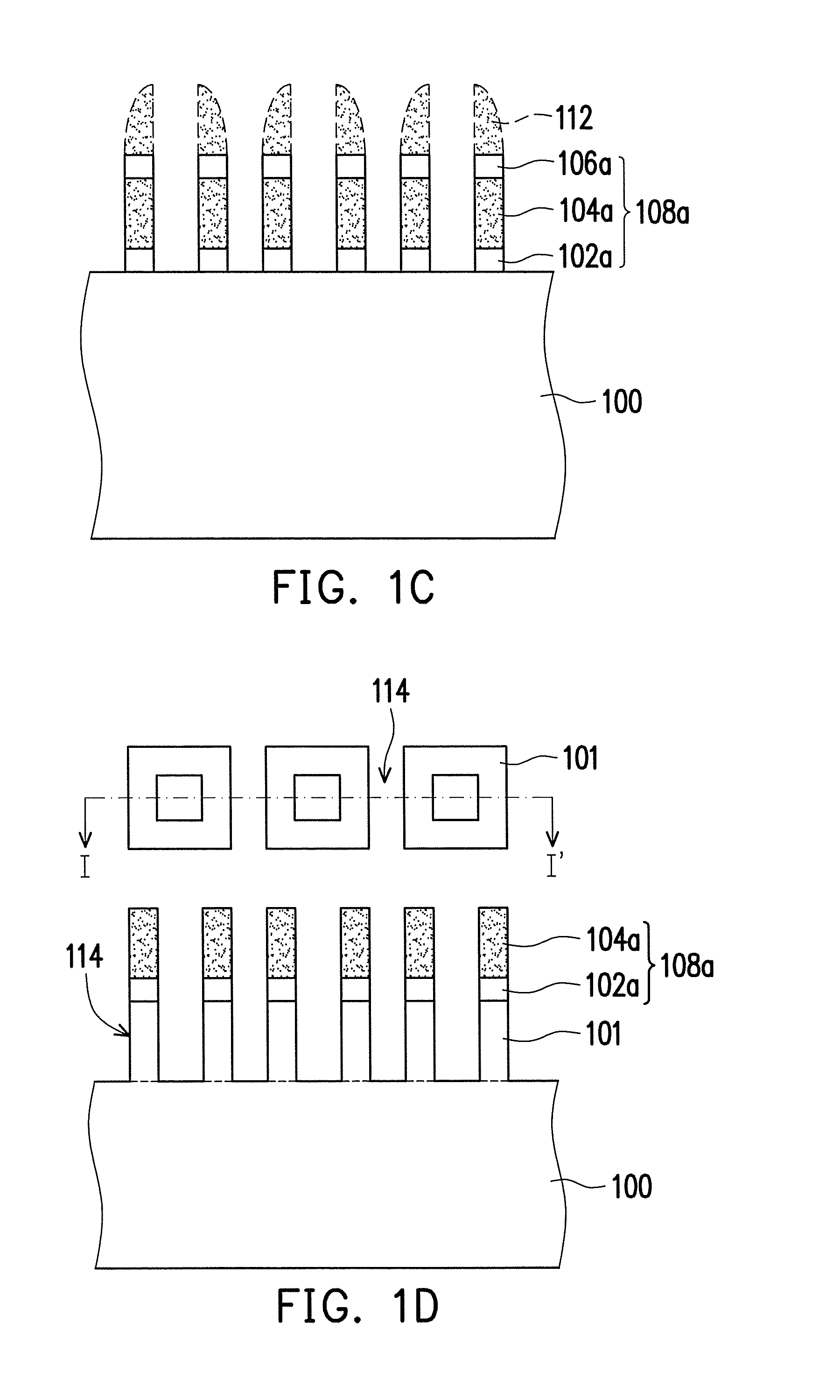Method of forming shallow trench isolation structure
a technology of isolation structure and shallow trench, which is applied in the direction of semiconductor/solid-state device manufacturing, basic electric elements, electric devices, etc., can solve the problems of difficult and complicated fabrication of such dual isolation structures having different depths
- Summary
- Abstract
- Description
- Claims
- Application Information
AI Technical Summary
Benefits of technology
Problems solved by technology
Method used
Image
Examples
first embodiment
[0035]FIG. 1A to FIG. 1J are schematic cross-sectional views illustrating a method of forming a shallow trench isolation structure according to a first embodiment of the present invention. It is noted that each of FIG. 1D to FIG. 1F has two parts in the drawing, the lower part illustrates a cross-sectional view, and the upper part illustrates a top view. For clarity and convenience of illustration, some components are omitted from the top views in FIG. 1D to FIG. 1F.
[0036]Referring to FIG. 1A, a hard mask layer 108 and a sacrificial layer 110 are sequentially formed on the substrate 100. The substrate 100 can be a semiconductor substrate, such as a silicon-containing substrate. The hard mask layer 108 can be a single layer or a multi-layer structure. In this embodiment, the hard mask layer 108 includes, from bottom to top, a first oxide layer 102, a nitride layer 104 and a second oxide layer 106. The first oxide layer 102 includes silicon oxide. The nitride layer 104 includes silico...
second embodiment
[0052]FIG. 2A to FIG. 2G are schematic cross-sectional views illustrating a method of forming a shallow trench isolation structure according to a second embodiment of the present invention. The second embodiment is similar to the first embodiment, the difference between them is illustrated in the following, and the similarities are not iterated herein.
[0053]Referring to FIG. 2A, first, the intermediate structure of FIG. 1D is provided. A filling layer 200 is formed in the first trenches 114. The insulating layer as a filling layer 200 can be blanket-formed on the substrate 100 filling in the first trenches 114 through a suitable deposition (FCVD) or spin-coating process. In an embodiment, the filling layer 200 can be an insulating layer including silicon oxide or a suitable dielectric material formed through a CVD process. In another embodiment, the filling layer 200 can be a softer insulating layer or a spin-on dielectric (SOD) material to have a substantially planar top surface.
[0...
PUM
 Login to View More
Login to View More Abstract
Description
Claims
Application Information
 Login to View More
Login to View More - R&D
- Intellectual Property
- Life Sciences
- Materials
- Tech Scout
- Unparalleled Data Quality
- Higher Quality Content
- 60% Fewer Hallucinations
Browse by: Latest US Patents, China's latest patents, Technical Efficacy Thesaurus, Application Domain, Technology Topic, Popular Technical Reports.
© 2025 PatSnap. All rights reserved.Legal|Privacy policy|Modern Slavery Act Transparency Statement|Sitemap|About US| Contact US: help@patsnap.com



